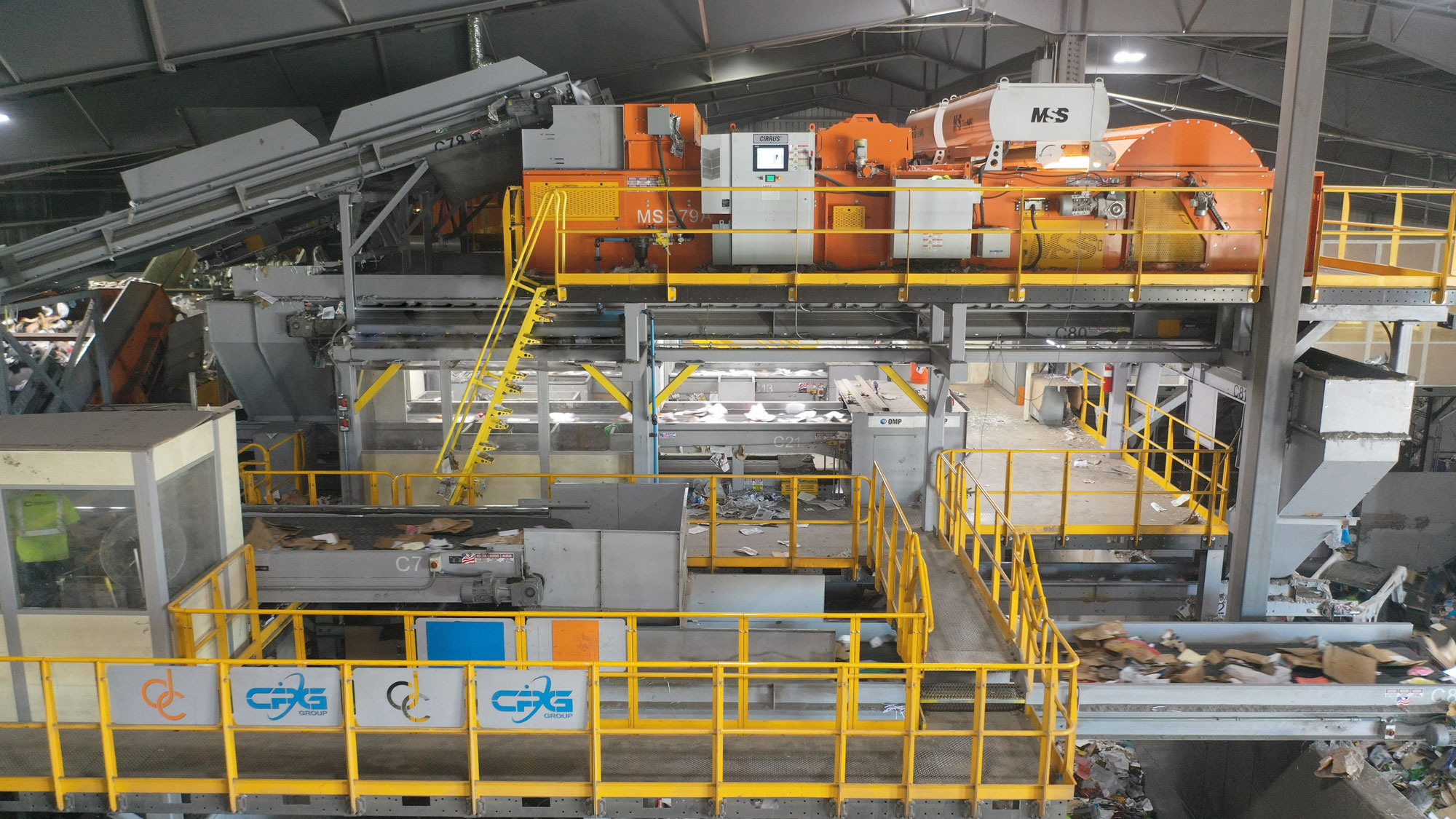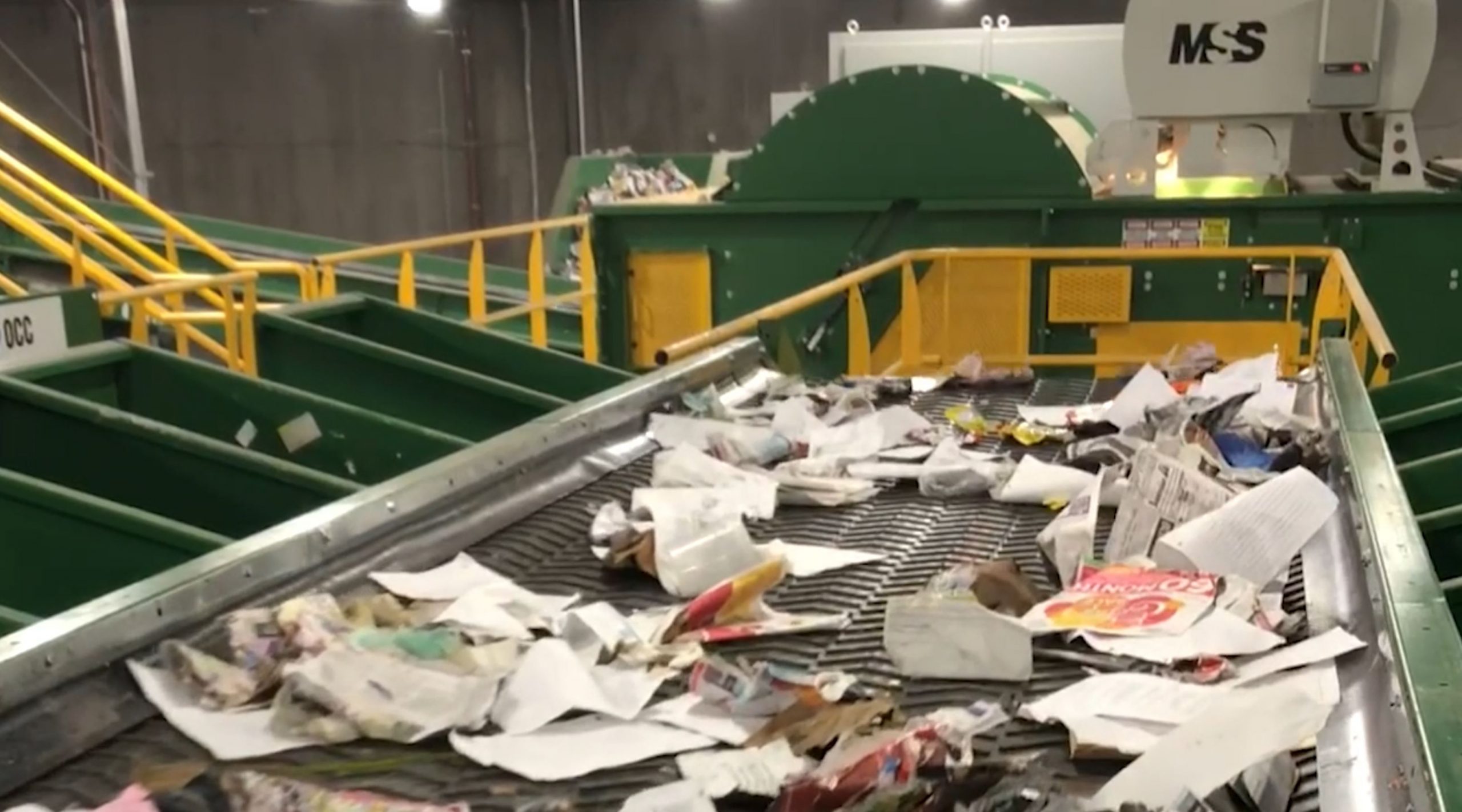Explore optical sorting solutions for the final stages of material separation in a MRF.

Pain points in a MRF can cause great financial and logistical strain. By identifying those challenges operators are better equipped to seek the right solution for their needs. The back end of container and fiber sort lines in MRFs represent the final stages to separate valuable commodities. Let’s explore how optical sorting can keep operating expenses low while delivering high volume separation and significant purity recovery.
Evolving ton and purity standards
Recycled material streams have taken a shift in recent years with a decline in newspaper volume and an increase in OCC. Optical sorters have the capability to quality control fiber commodities and monitor levels of prohibitives and out-throws. The latest generation NIR, color and metal sensors provide the operator with a deep understanding of the generated products and can be adjusted to changing market dynamics as needed with a touch of a button.
Manual sorters are more and more burdened with deciphering containers featuring a new, much wider variety of fully sleeved bottles and label designs. Sophisticated optical sorter reference libraries contain material and color categories that can be updated easily to maximize plastic recovery, particularly PET containers. To alleviate the stress of training onsite operators at the MRF, newer generation optical sorters can be accessed remotely to easily and quickly update parameter settings.
Maintenance and cleaning
Machine down time is one of the biggest factors of higher cost-per-ton in a MRF. To ensure system reliability and peak performance, it is important to regularly clean and maintain optical sorters. This includes the glass windows in front of the halogen lamps and NIR spectrometer, as well as the splitter rollers inside the catcher hood. A routine cleaning schedule helps reducing the potential for jams and keeping the sorting performance at peak level.
A consistent compressed air quality adds to the longevity of any optical sorter. To ensure optimum sorting performance, it is vital to test the functionality of each air valve regularly.
Old technology vs new
Keeping up with the evolving ton in today’s challenging marketplace proves to be exhausting if the technology isn’t there to back it up. Generating cleaner products at a higher recovery rate is the end goal for MRFs, but units just five years or older may be difficult to efficiently monitor and maintain because they lack the automation and remote accessibility of their newer counterparts.
Just like with any technology, a performance increase is inevitable with each new generation. While the return on investment for new optical sorters may not seem adequate enough for some MRFs (complete retrofits can be expensive with logistical challenges and install downtime) there are options to update older optical sorters with a “sensor only” package, rendering a lower cost compared to replacing a whole unit. If there is no added value like cutting labor costs, processing higher volumes or generating higher value commodities, it can be tricky to navigate the decision for long-term strategy savings and profit.
Ultimately newer machines offer an array of possibilities that outweigh any doubts to undertake a big transition. Time consuming manual calibration is a thing of the past now that new optical sorters can virtually eliminate the task using internal routines and algorithms that compensate for changes in the environment of the machine. Automation is what separates the old and new with self-reporting units that monitor sensor performance and provide status updates of internal optical and electronic components. Sorter libraries are improved with advanced statistics and data analysis from sensors throughout the MRF that feed into the main programmable logic controller (PLC) or supervisory control and data acquisition (SCADA) system and adjusts for mechanical separation equipment as well as optical sorters.
Recap
Evaluating the best solutions for material separation at all stages of a MRF can be daunting. As material streams evolve and markets change, new technologies make it easier on operators to assess what is happening with their system in real-time to make any necessary program adjustments to fit their needs. Optically separating commodities is an option to more effectively recover higher volumes with better purity at a lower cost.
Learn more about our separation solutions.

This article originally appeared in in Waste Dive.
